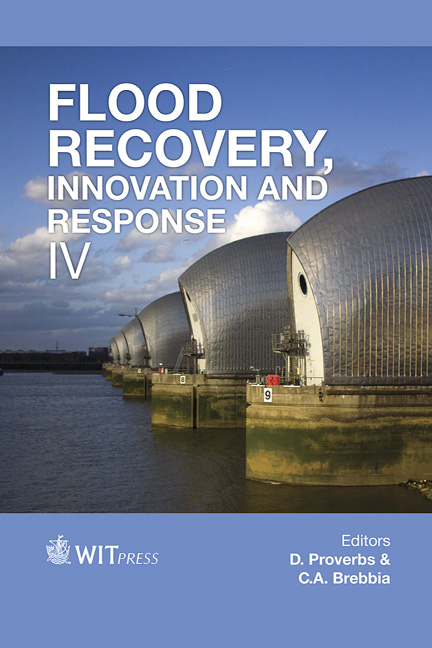Numerical Simulation Of The Inundation Area For Landslide-induced Debris Flow: A Case Study Of The Sha-Xinkai Gully In Southern Taiwan
Price
Free (open access)
Transaction
Volume
184
Pages
11
Page Range
35 - 45
Published
2014
Size
865 kb
Paper DOI
10.2495/FRIAR140041
Copyright
WIT Press
Author(s)
J.-C. Chen, J.-S. Wang, M.-R. Chuang & C.-J. Jeng
Abstract
Typhoon Morakot struck central and southern Taiwan on August 8, 2009, and the high rainfall intensity and accumulated rainfall-induced several floods, landslides, and debris flows. In this study, the destructive debris flow caused by Typhoon Morakot in the Sha-Xinkai gully of the Liouguei District in southern Taiwan was selected as a case study for analysis. A two-dimensional model (FLO-2D software) was used to simulate debris flow. First, hydrological and geomorphological data were collected on the debris flow event and the rheological properties of slurry collected from the field were analyzed. Next, the relationship between debris flow discharge and water flow discharge was obtained. The simulation results for the deposited area and depth were then compared to aerial photos taken during a field investigation. Finally, the bulked coefficient of discharge and the resistant parameters used in the model were presented. The results showed that the maximum deposited depth in the debris flow inundated area was over 6 m; the maximum velocity, 6.6 m/s; and the deposited volume, almost 1,000,000 m3. The simulated deposition depth and inundation area matched the results from the field investigation reasonably well. In this study, the parameters and processes needed for the simulation of landslide-induced debris flows were proposed to provide a reference for hazard zone mapping and debris flow hazard mitigation.
Keywords
Typhoon Morakot, FLO-2D, rheological property, bulked coefficient.





